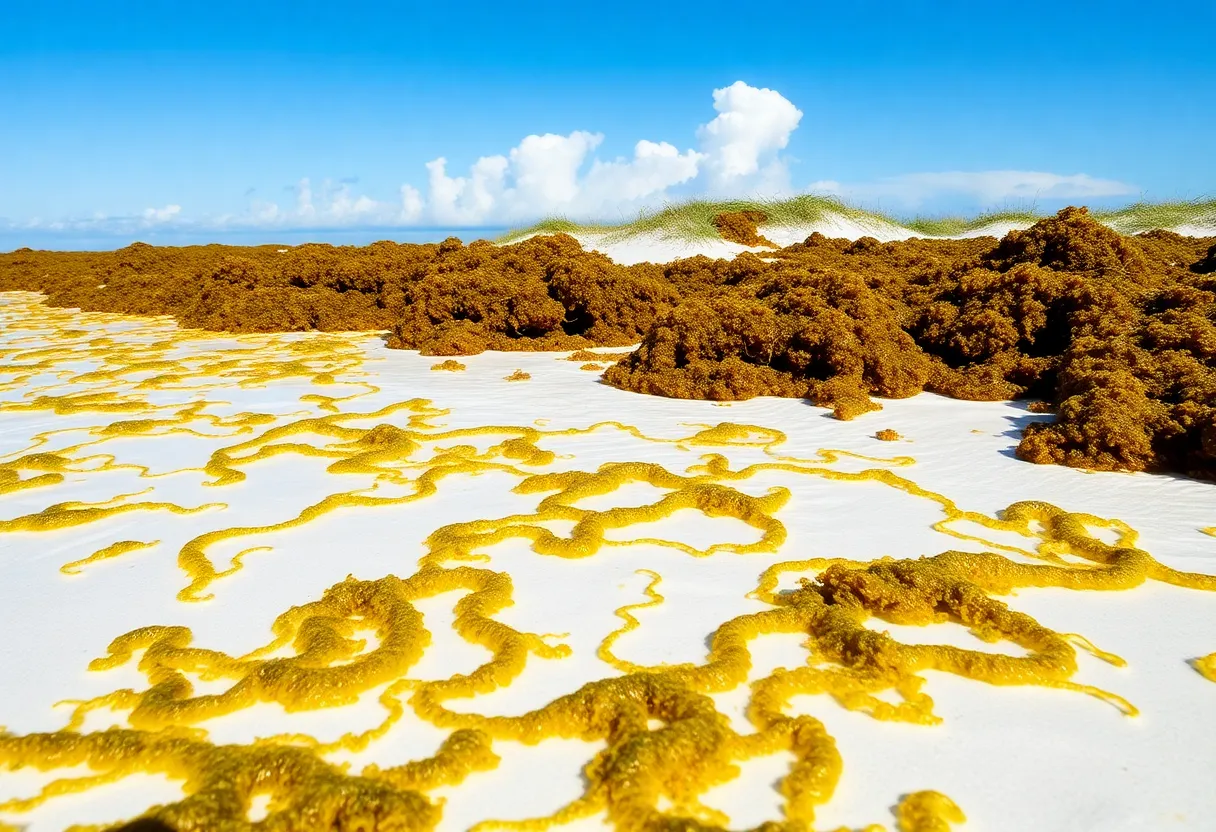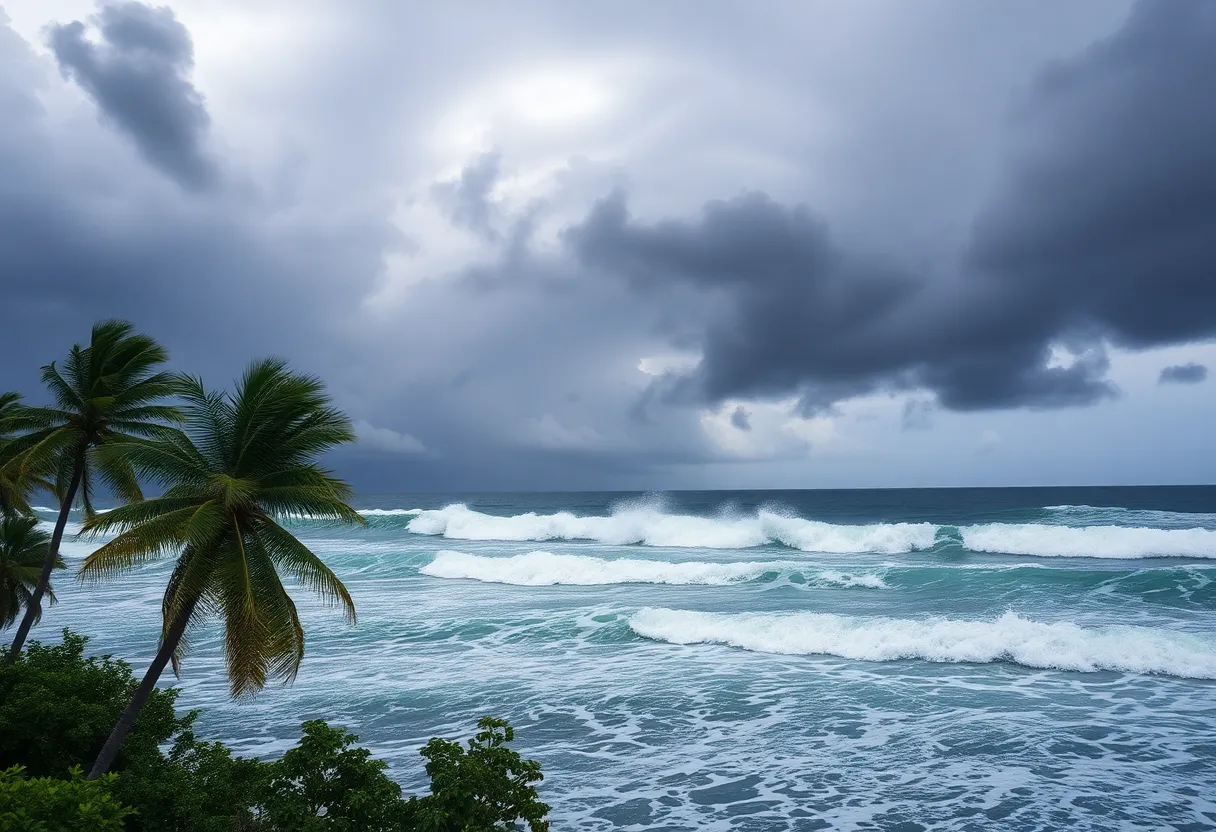News Summary
Florida is facing a record bloom of sargassum seaweed, causing foul odors and skin irritations. This bloom, which stretches across 5,500 miles, threatens the state’s tourism industry as Memorial Day weekend approaches. Environmental experts link the increase in sargassum to climate change and agricultural runoff. With many tourists likely to be deterred by the unpleasant conditions, local economies reliant on tourism could suffer. Cleanup efforts are underway, but challenges remain in mitigating the impacts effectively.
Florida is experiencing a record-breaking bloom of sargassum seaweed, creating concerns ahead of the upcoming Memorial Day weekend. As tourists flock to Florida’s beaches, the presence of this toxic seaweed is leading to foul odors and skin irritations, potentially impacting the state’s vital tourism industry.
Current estimates show that the annual sargassum bloom has stretched across an astonishing 5,500 miles from Africa to the Caribbean, with around 31 million metric tons of the seaweed recorded in April. This amount marks a 40% increase over the previous record observed in June 2022. March also set a record for the month with approximately 13 million metric tons, surpassing the last March record of 12 million metric tons.
Typically, the peak months for sargassum blooms are June and July, but notable amounts have been reported since March this year. The Florida Fish and Wildlife Conservation Commission indicates that while sargassum provides essential habitats for various marine species, its presence on beaches can pose health risks.
Environmental experts have noted that sargassum has been increasingly prevalent since 2011, likely due to rising ocean temperatures. A shift in the climatic conditions during 2009-2010 may have pushed sargassum into more tropical waters, leading to its explosive growth. Although sargassum is generally harmless while it remains in the water, its decomposition on land can produce toxic byproducts like hydrogen sulfide and ammonia.
The ongoing decay process can release harmful odors and create respiratory issues for individuals with pre-existing conditions. Between May 6-12, minimal sargassum risk was reported along the majority of Florida’s coast, but medium risks were identified near the Big Bend coast. An experimental NOAA tracking map is monitoring varying levels of sargassum risk not only in Florida but also in neighboring regions including Cuba, Mexico, Jamaica, and Central America.
The alarming rise in sargassum blooms is attributed to a combination of climate change, nitrogen runoff from agriculture, and deforestation practices in South America. From January to mid-May 2023, an estimated 37.5 million metric tons of sargassum were recorded in the Atlantic, significantly surpassing the prior year’s figures.
The influx of sargassum is expected to impact tourism in affected areas. Beaches that emit unpleasant odors may deter visitors, presenting challenges for local economies that depend heavily on tourism. In response, the Mexican government has initiated cleanup operations around popular beach locations to mitigate the impacts of sargassum.
However, these cleanup efforts are resource-intensive, often utilizing machinery that can also harm the environment. With the potential for conditions similar to the heavy sargassum inundations experienced in 2023, the future of tourism in affected regions remains uncertain.
There are emerging theories suggesting the possibility of repurposing sargassum to create biofuels or biodegradable products, which could aid in the fight against plastic pollution. Nevertheless, the current situation serves as a significant reminder of the importance of adopting more sustainable development practices on a global scale.
Deeper Dive: News & Info About This Topic
- TCPalm
- Wikipedia: Sargassum
- Fox Weather
- Google Search: sargassum seaweed Florida
- Travel And Tour World
- Encyclopedia Britannica: sargassum
- CNN
- Google News: sargassum seaweed impact on tourism

Author: STAFF HERE PETERSBURG WRITER
The ST PETERSBURG STAFF WRITER represents the experienced team at HEREStPetersburg.com, your go-to source for actionable local news and information in St Petersburg, Pinellas County, and beyond. Specializing in "news you can use," we cover essential topics like product reviews for personal and business needs, local business directories, politics, real estate trends, neighborhood insights, and state news affecting the area—with deep expertise drawn from years of dedicated reporting and strong community input, including local press releases and business updates. We deliver top reporting on high-value events such as Grand Prix of St. Petersburg, Localtopia, and SHINE Mural Festival. Our coverage extends to key organizations like the St. Petersburg Area Chamber of Commerce and St. Pete Downtown Partnership, plus leading businesses in finance, manufacturing, and healthcare that power the local economy such as Raymond James Financial, Jabil, and Bayfront Health St. Petersburg. As part of the broader HERE network, including HEREJacksonville.com, HEREOrlando.com, HERETallahassee.com, and HERETampa.com, we provide comprehensive, credible insights into Florida's dynamic landscape.





